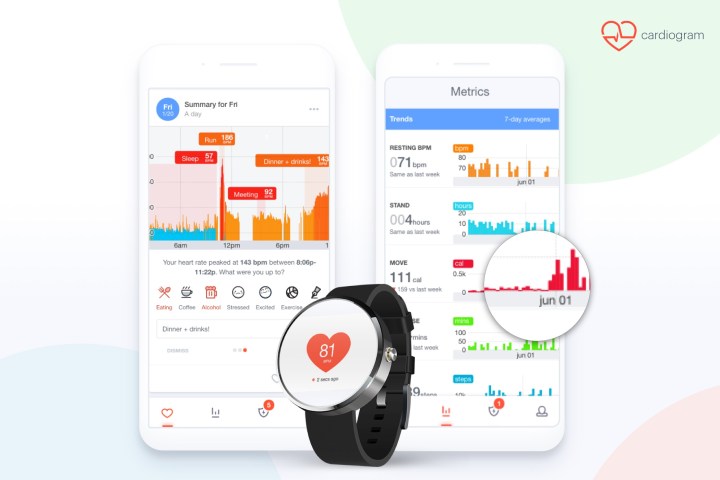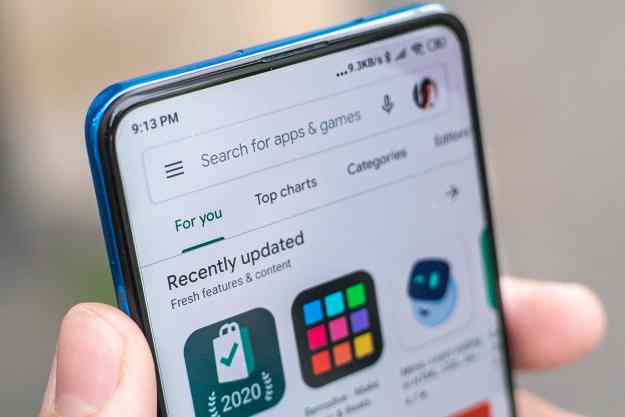
Cardiogram is an app that was founded by two ex-Google teach leads in an effort to re-invent preventive medicine with the help of consumer wearables. With your Android Wear watch, you are able to track and understand your health, fitness, sleep, and stress.
Opening the app on your smartphone will show you minute-to-minute heart rate, diet, exercise, workouts, and track spikes related to stress. There is also a window that shows your step count, resting heart rate, and how your metrics compare to the population.
Other features include a “Habits” tab to find new healthy habits or activities you will enjoy and a “Me” tab where you create a profile to share your health data with medical researchers. By sharing your metrics, you can contribute to studies related to heart health.
There are also collaborative experiences through the app. The Daily Leaderboard lens in the Timeline tab allows you to compete steps and activity levels with friends. Even if they use an Apple Watch or Garmin, you can still invite them to join in on the leaderboard.
With the launch of Cardiogram for Android Wear also comes unique features. By default, Cardiogram turns your watch’s heart rate sensor on once every five minutes. You can also get minute-by-minute heart rate throughout the day by adjusting the measurement frequency. The app also integrates with Google Fit for steps and exercise tracking, along with support for circular and rectangular screens.
Recently, Cardiogram partnered with the University of California San Francisco Cardiology department to run a clinical study. The results showed that its deep neural network — DeepHeart — can detect atrial fibrillation with 97 percent accuracy using consumer-grade heart sensors. Atrial fibrillation causes one in four strokes which could be prevented by detecting it early, ultimately saving lives.
In partnership with UCSF Health eHeart study, Cardiogram is also investigating other conditions that are known to be related to heart rate variability. This includes sleep apnea, which is 80 percent undiagnosed.
Cardiogram is currently available for download from the Google Play Store. The app is compatible with any Android Wear watch that has a heart rate sensor.
Editors' Recommendations
- The 1Password Android app just got a huge upgrade
- Our 5 favorite iPhone and Android apps by Black developers
- App subscription fatigue is quickly ruining my smartphone
- Google’s Android monopoly finds its biggest challenge, and Apple might be next
- Google overhauls its Family Link app for easier parental controls


